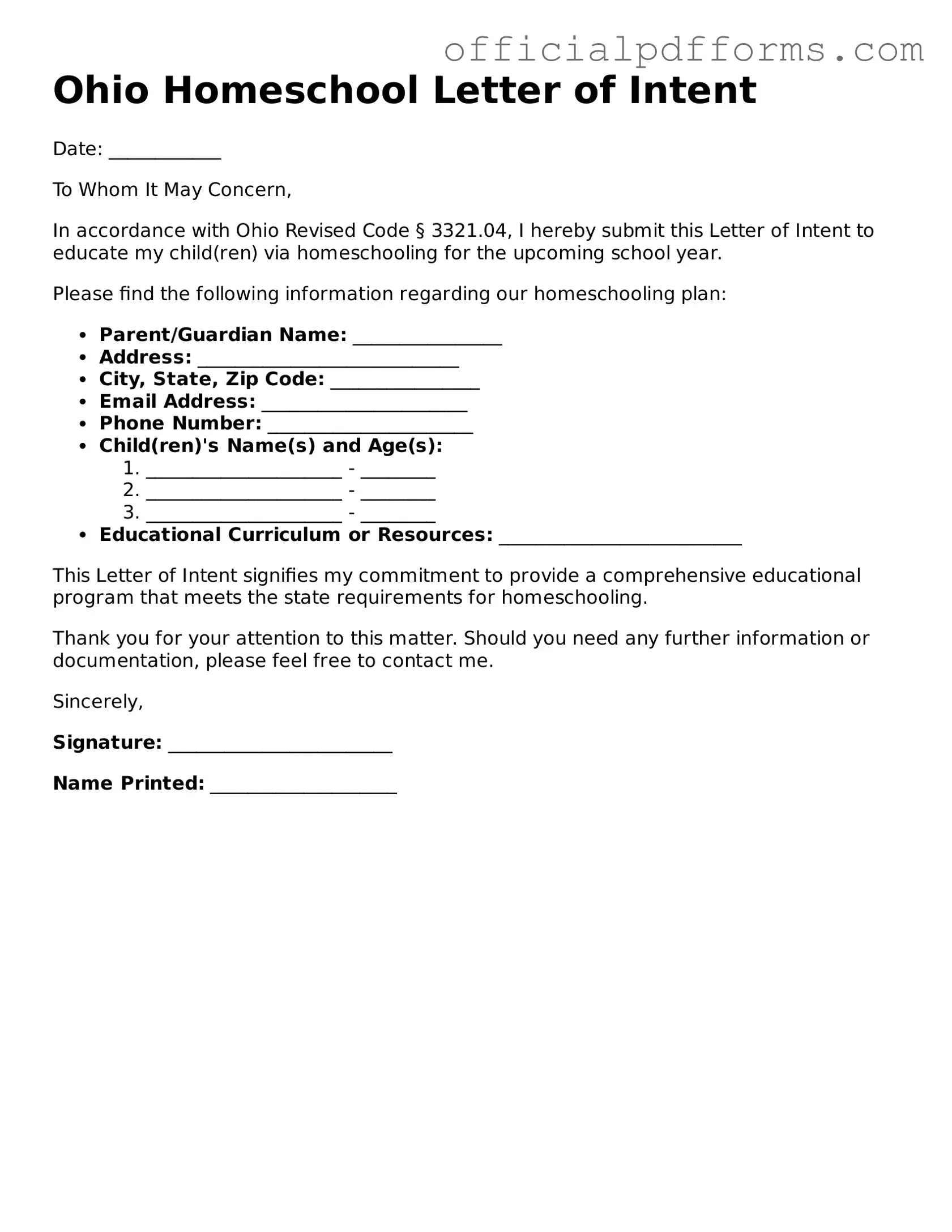What is the Ohio Homeschool Letter of Intent?
The Ohio Homeschool Letter of Intent is a formal document that parents or guardians must submit to notify their local school district of their intention to homeschool their children. This letter serves as an official declaration that the family has chosen to educate their child outside of the traditional public school system.
Who needs to submit the Letter of Intent?
Any parent or guardian who wishes to homeschool their child in Ohio must submit the Letter of Intent. This requirement applies to children who are of compulsory school age, typically between the ages of 6 and 18. It is essential for families to complete this step to comply with state regulations.
When should the Letter of Intent be submitted?
The Letter of Intent should be submitted at least 14 days before the start of the homeschooling program. If a family decides to begin homeschooling at the start of a school year, it is advisable to send the letter well in advance to ensure compliance with the timeline set by the Ohio Department of Education.
The Letter of Intent must include several key pieces of information:
-
The name and address of the parent or guardian.
-
The name and birth date of the child or children being homeschooled.
-
A statement indicating the intent to homeschool.
-
The educational curriculum or plan that will be used.
While there is no mandated format for the Letter of Intent, it is recommended that parents follow a clear and organized structure. Using a simple letter format that includes the required information will suffice. Some families choose to use templates available online to ensure they cover all necessary elements.
What happens after submitting the Letter of Intent?
Once the Letter of Intent is submitted, the local school district will typically acknowledge receipt. Parents should keep a copy of the letter for their records. After acknowledgment, families can begin their homeschooling journey. They must also adhere to any additional reporting requirements set by the state, such as submitting an annual assessment of the child's educational progress.
Can the Letter of Intent be revoked?
Yes, parents can revoke their Letter of Intent if they decide to enroll their child back into a public or private school. To do this, a written notice should be provided to the school district, indicating the decision to discontinue homeschooling. It is important to ensure that the transition back to traditional schooling is smooth and complies with any enrollment procedures.
The Ohio Homeschool Letter of Intent form can typically be found on the official website of the Ohio Department of Education or through local school district websites. Many homeschooling organizations also provide resources and templates to assist families in completing the form accurately.
